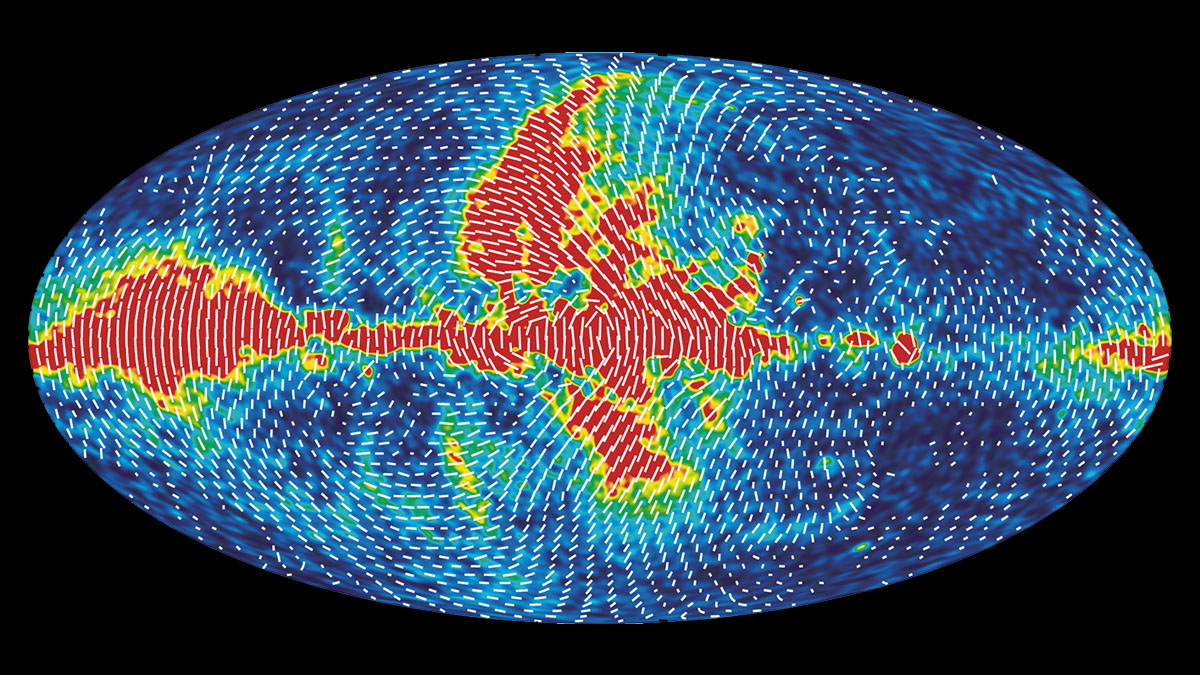other universes, found only on the arxiv blog…

Is it just me or is the CMBR becoming more like a Rorschach test for some theoretical physicists as of late? I mean, first we have Roger Penrose seeing traces of past Big Bangs and assembling them into a somewhat shaky and dubious model of cyclical cosmology, and now we have a team of astronomers who think they’re seeing traces of collisions with other universes, big bruises left by an alien cosmos bumping into ours. As is the custom for Technology Review writers, the tentative papers are hyped as grand discoveries that shake up what we know about our very existence, offering evidence of former Big Bangs and of other universes floating around on the periphery of ours. And wouldn’t you know it, the evidence of these alien cosmoses comes to us in the form of circles in the WMAP data. The basic idea is that entire universes are like bubbles that float in an infinite plane and because they don’t exactly have GPS or GPP, they collide once in a while, leaving imprints in the temperature of the CMBR. As the writers for Technology Review rush to trump it in their post..
Now Stephen Feeney at University College London and a few pals say that they’ve found tentative evidence of this bruising in the form of circular patterns in cosmic microwave background. In fact, they’ve found four bruises, implying that our universe must have smashed into other bubbles at least four times in the past. Again, this is an extraordinary result: the first evidence of universes beyond our own.
Well, actually no, it’s not. We have patterns in the WMAP data which look like circles if you play around with a few temperature thresholds. Whether they’re just random noise or the traces of collisions between universes remains to be seen and the latter requires a whole lot more evidence that the former. All the sensationalistic, breathless, Daily Galaxy-style headlines and write-ups in TR are extremely premature at best and needless hype at worst. And as always, the reservations and notes that all this may be just a fluke and that oh, there’s a spacecraft taking a far more detailed and accurate map of the CMBR right now in which all these circles and bruises might just evaporate, are saved after the klaxon of supposedly great discoveries has been rung. The comments, in the meanwhile, have been left to internet physics cranks pitching their theories and spouting a fountain of gibberish best befitting the Bogdanov brothers. I know, I know, I’ve grumbled about TR’s policy of highlighting bizarre, poorly thought out, cryptic papers before when reviewing an end of time hypothesis that mathematically stopped time in the entire universe just because the authors wanted physics to stay tidy, but the blog just seems to be getting worse month in, month out.
I’m sure there are some great papers laying there in the depths of arXiv, filled to the brim with cool stuff. But in the editorial rush to hype up alternative cosmologies based on very shaky foundations or some mathematical constructs blatantly named after famous figures in physics to give them a patina of respectability, we’re highly unlikely to see them. Sometimes I wonder if I could just take my post about warp drive construction, wrap it in some highly esoteric C# code that looks fancy but really just does simple calculations you could easily get to work in Microsoft Excel, pepper it with words about aliens, mega-engineering, and SETI, then submit it as a paper showing how to better search for alien civilizations even though it’s just basic, back of the napkin math and pure speculation that may be fun for a longer blog post, but certainly not an academic paper. But what do you want to bet TR’s blog would write it up as something meaningful and usable to actual astronomers trying to find out if we’re alone in the cosmos?
See: Feeney, S., et al. (2010). First Observational Tests of Eternal Inflation arXiv: 1012.1995v1





